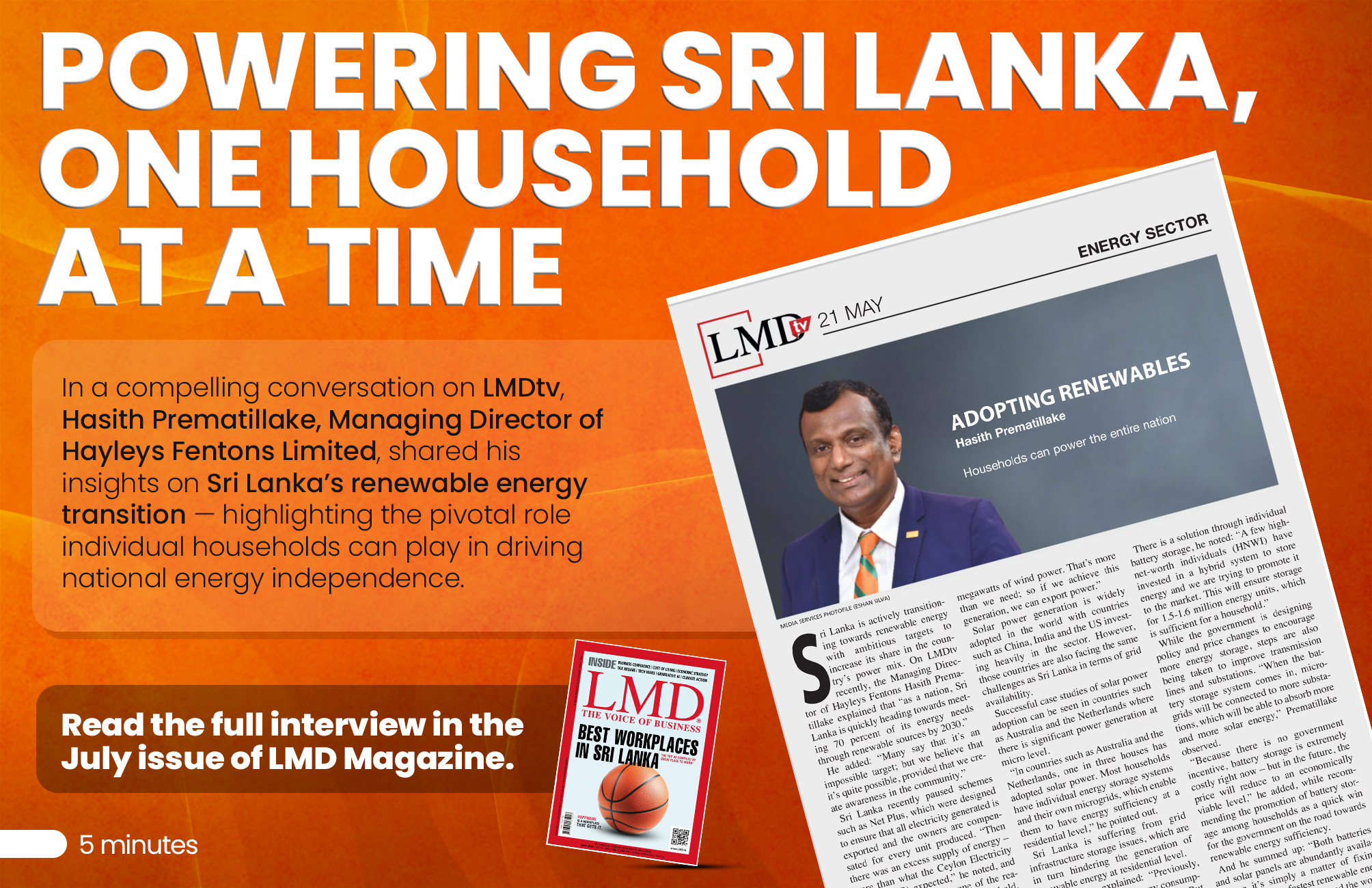Sri Lanka is actively transitioning towards renewable energy with ambitious targets to increase its share in the country’s power mix. On LMDtv recently, the Managing Director of Hayleys Fentons Hasith Prematillake explained that “as a nation, Sri Lanka is quickly heading towards meeting 70 percent of its energy needs through renewable sources by 2030.”
He added: “Many say that it’s an impossible target; but we believe that it’s quite possible, provided that we create awareness in the community.”
Sri Lanka recently paused schemes such as Net Plus, which were designed to ensure that all electricity generated is exported and the owners are compensated for every unit produced. “Then there was an excess supply of energy – more than what the Ceylon Electricity Board (CEB) expected,” he noted, and explained that this was one of the reasons for the scheme being put on hold.
Despite hindrances from the public sector regarding investments in renewable energy, the private sector is making good strides in growing Sri Lanka’s solar power harvesting potential and other renewable energy sources such as wind.
Prematillake continued: “While there are environmental concerns around the Mannar belt in Sri Lanka, India has identified the Palk Strait belt to have the capacity to generate about 60,000 megawatts of wind power. That’s more than we need; so if we achieve this generation, we can export power.”
Solar power generation is widely adopted in the world with countries such as China, India and the US investing heavily in the sector. However, those countries are also facing the same challenges as Sri Lanka in terms of grid availability.
Successful case studies of solar power adoption can be seen in countries such as Australia and the Netherlands where there is significant power generation at micro level.
“In countries such as Australia and the Netherlands, one in three houses has adopted solar power. Most households have individual energy storage systems and their own microgrids, which enable them to have energy sufficiency at a residential level,” he pointed out.
Sri Lanka is suffering from grid infrastructure storage issues, which are in turn hindering the generation of renewable energy at residential level.
Prematillake explained: “Previously, Sri Lanka’s nighttime energy consumption was higher than during the day. But this has changed due to lifestyles becoming more sophisticated and an improvement in people’s economic status. Higher daytime power usage pairs well with solar power – but unfortunately, when there is no even power generation and usage, energy storage becomes a necessity.”
There is a solution through individual battery storage, he noted: “A few high-net-worth individuals (HNWI) have invested in a hybrid system to store energy and we are trying to promote it to the market. This will ensure storage for 1.5-1.6 million energy units, which is sufficient for a household.”
While the government is designing policy and price changes to encourage more energy storage, steps are also being taken to improve transmission lines and substations. “When the battery storage system comes in, microgrids will be connected to more substations, which will be able to absorb more and more solar energy,” Prematillake observed.
“Because there is no government incentive, battery storage is extremely costly right now – but in the future, the price will reduce to an economically viable level,” he added, while recommending the promotion of battery storage among households as a quick win for the government on the road towards renewable energy sufficiency.
And he summed up: “Both batteries and solar panels are abundantly available, so it’s simply a matter of fixing them. That’s the fastest renewable energy solution that Sri Lanka and the world can adopt. Self-sufficiency at the domestic level is the simplest solution, where you help yourself by reducing your electricity bill and help the economy as well.”


